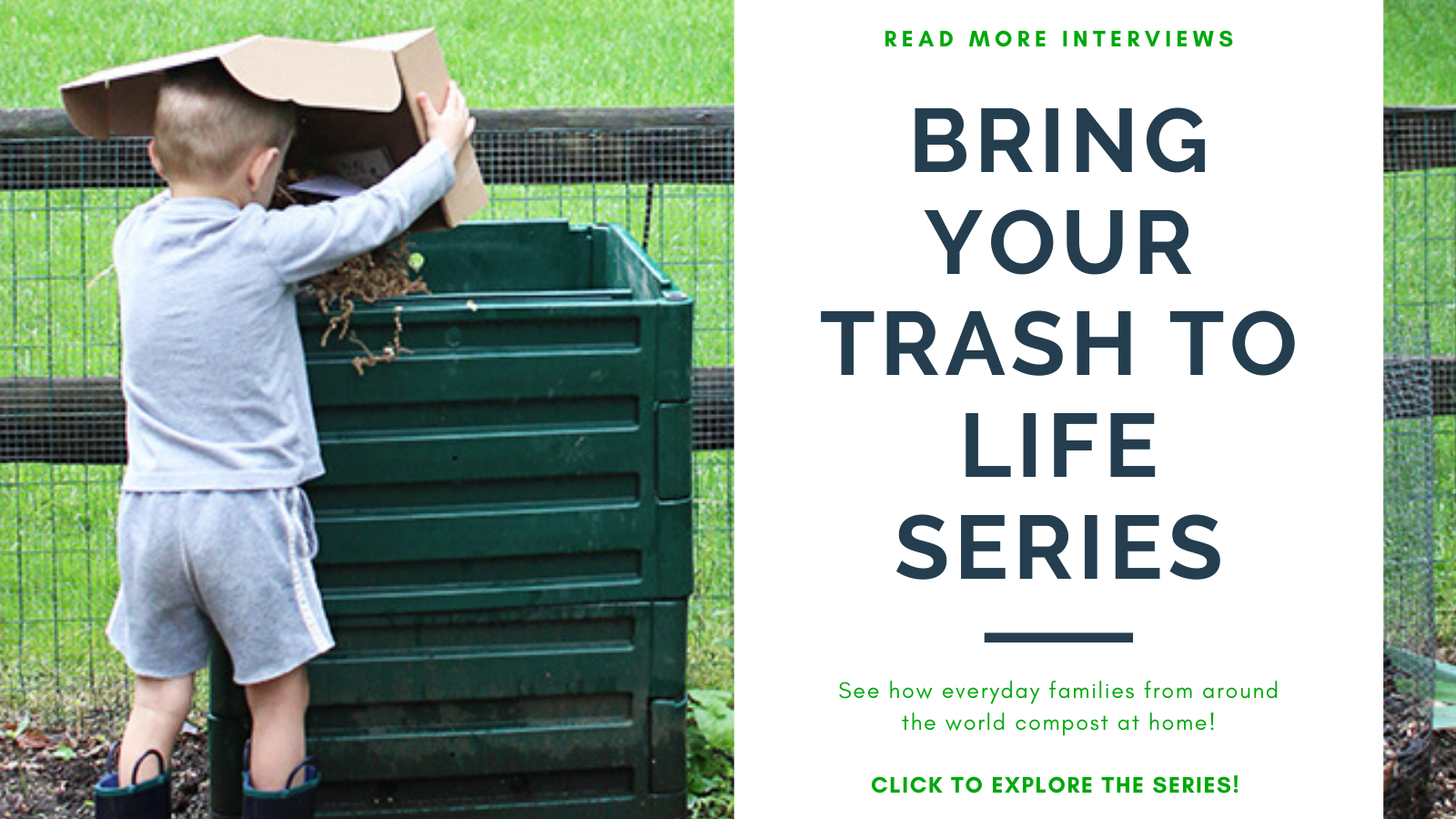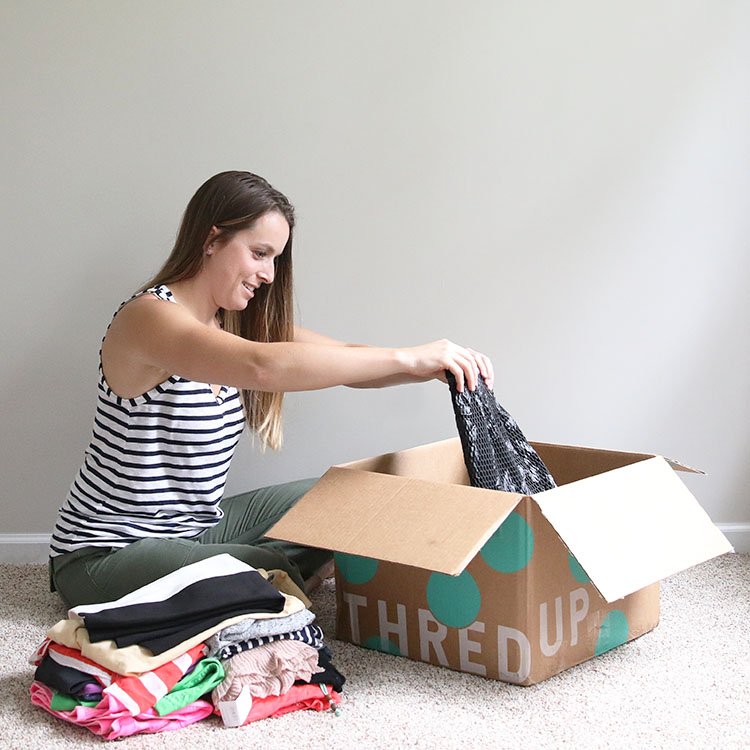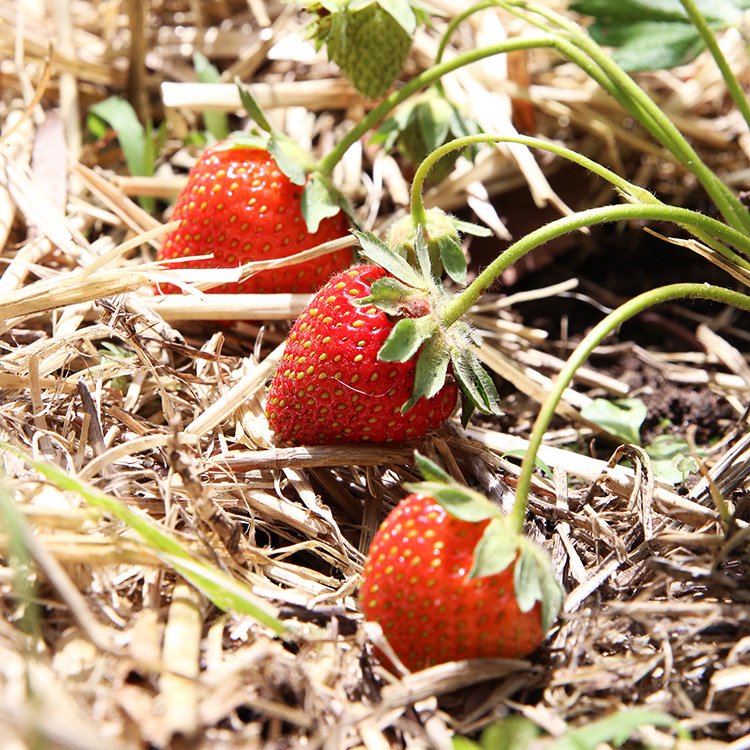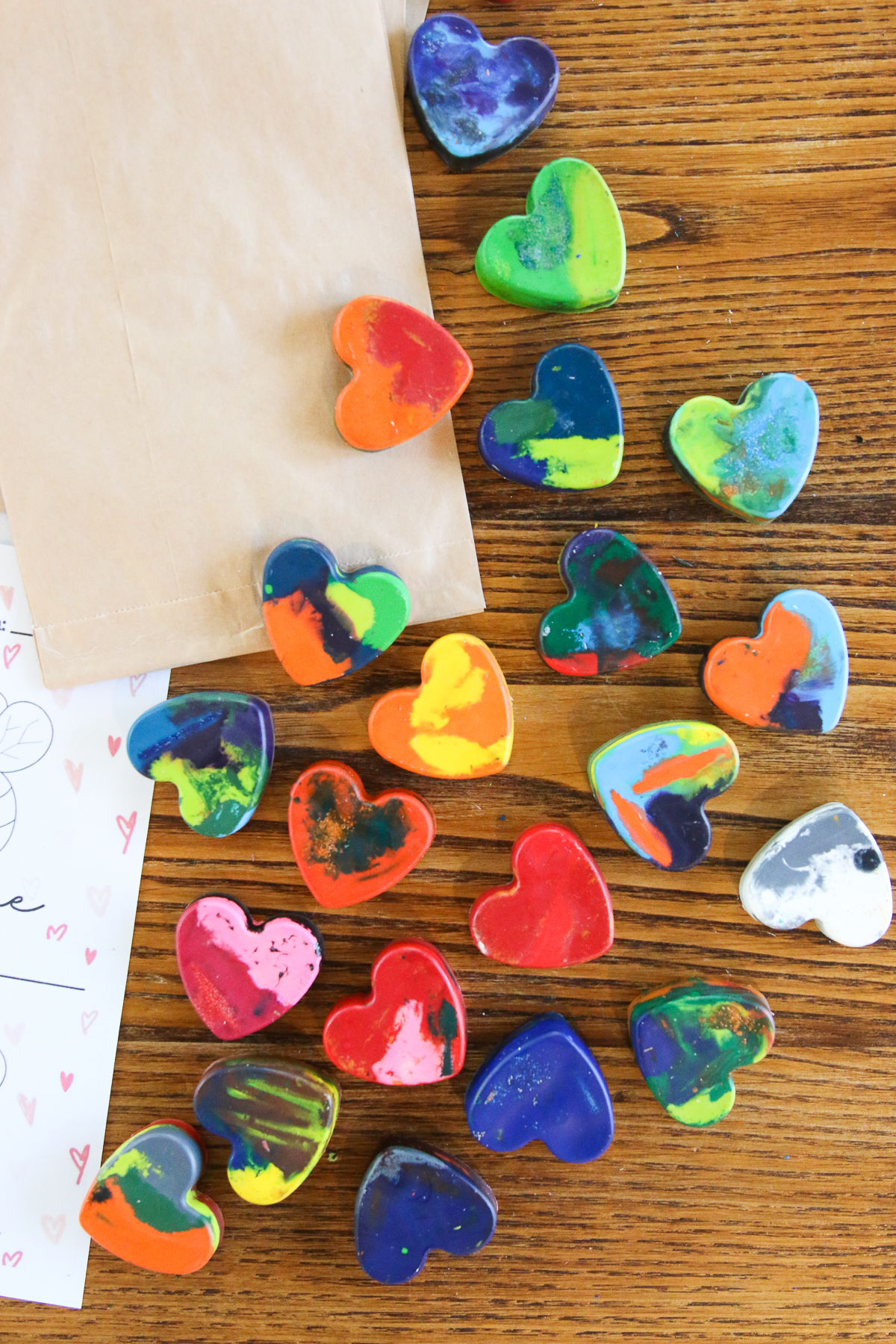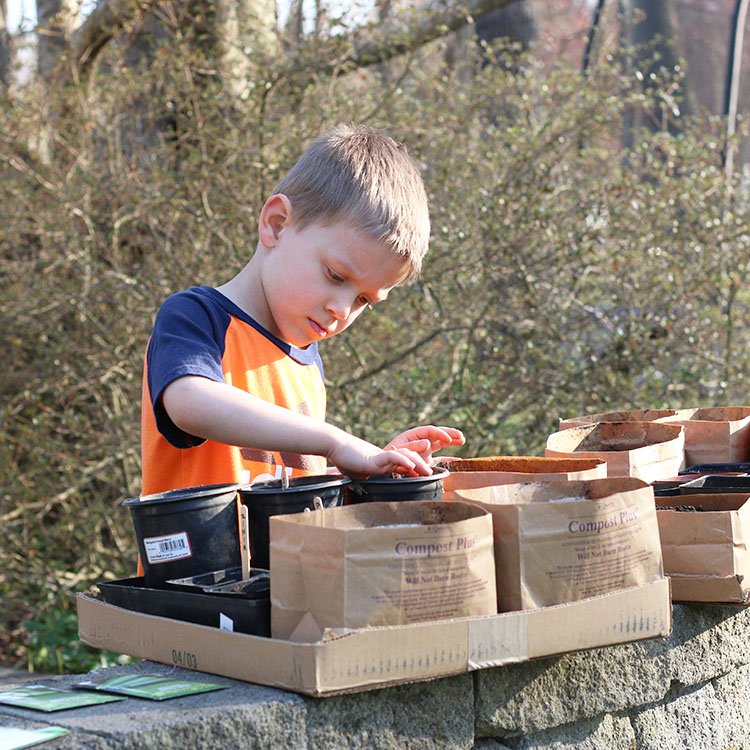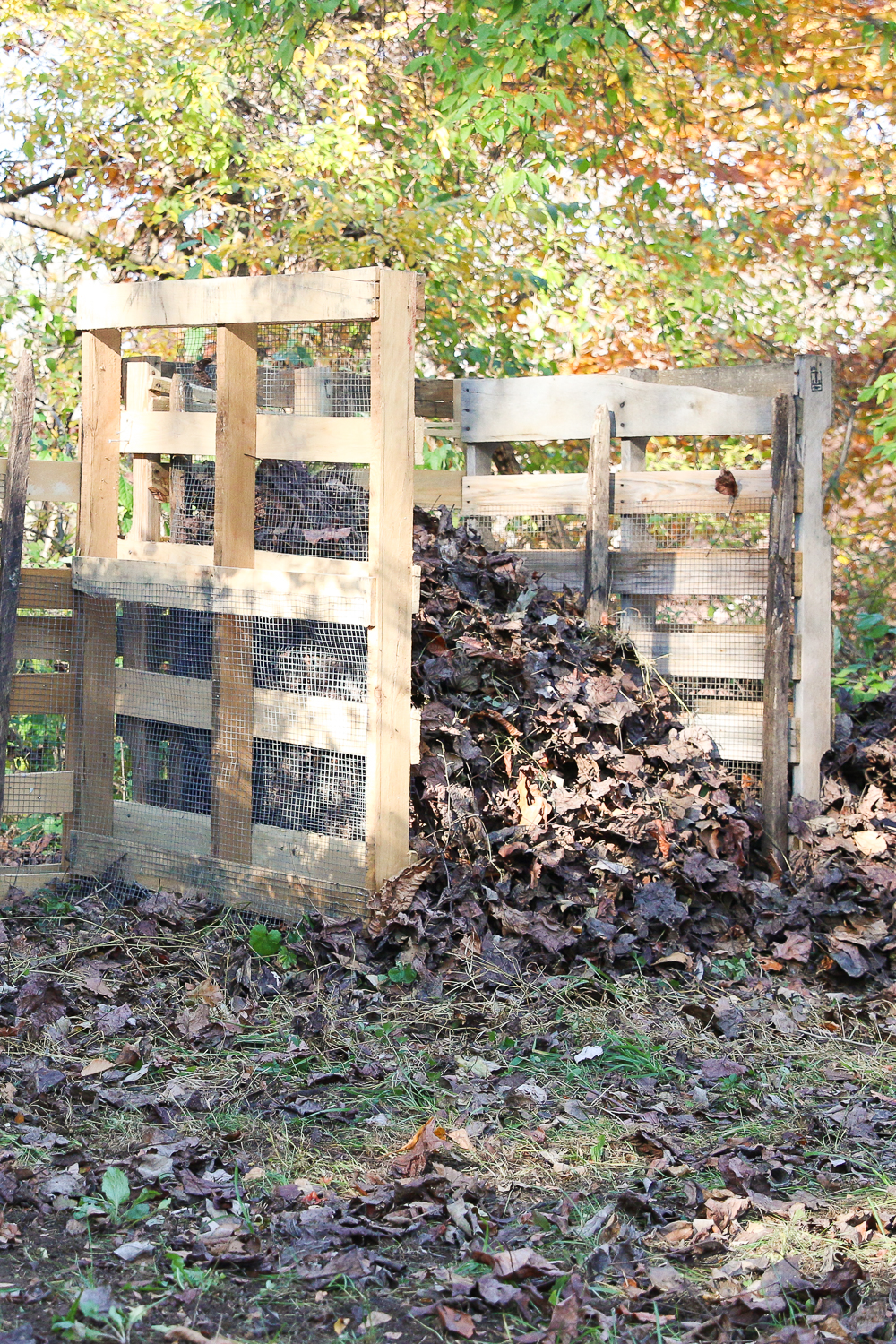How To Compost At Home | Subpod Vermicomposting
Want to try composting at home without the mess? The Subpod is a great option for composting at home that is easy to use, looks lovely in your home garden, and doesn’t attract critters. Read on for how one family uses a Subpod to reduce their food waste and feed their garden!
Want to get a Subpod for yourself? Use code HONESTLY10 and get 10% off your own Subpod!
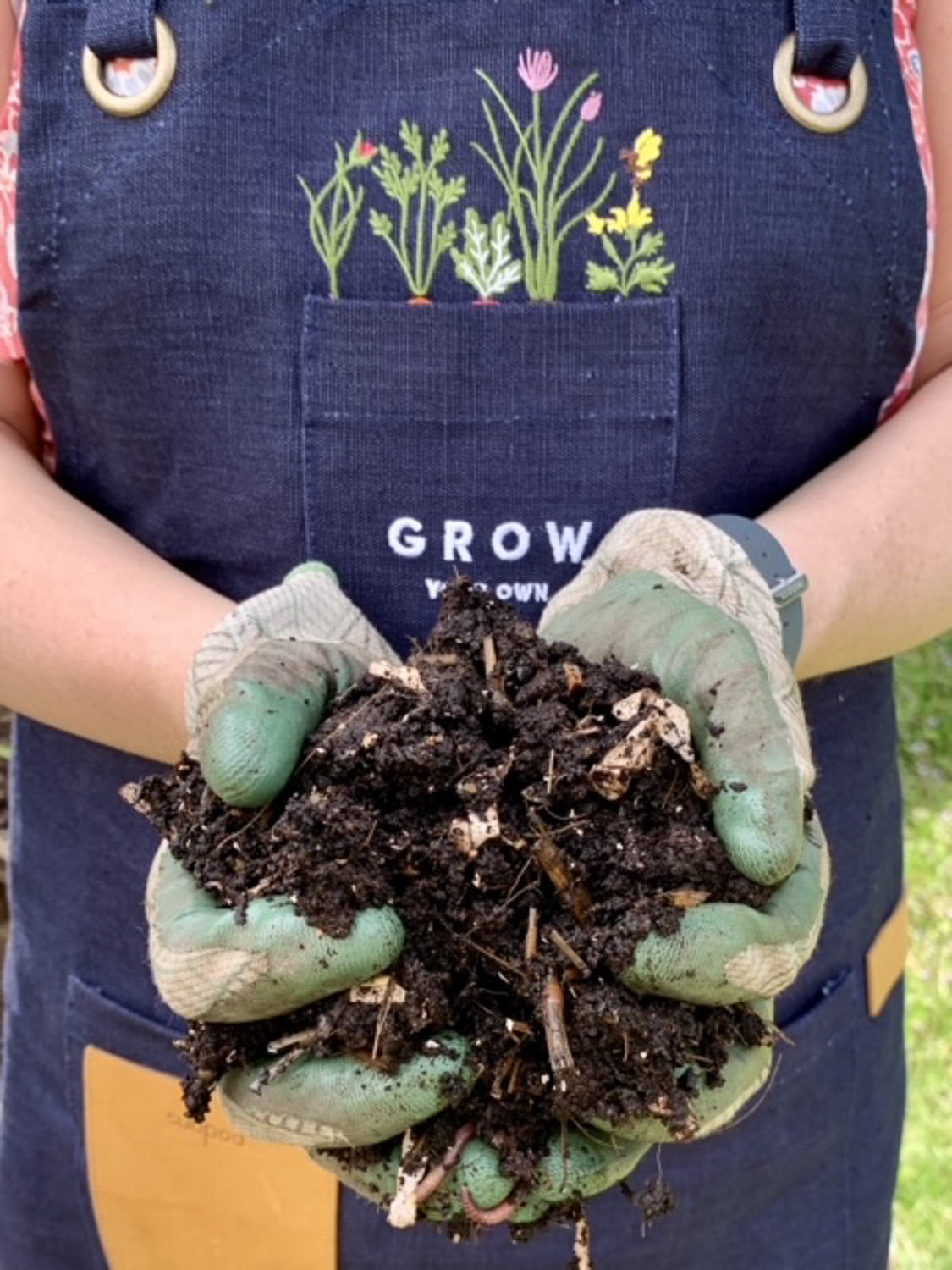
This post contains affiliate links.
The Compost Chronicles series highlights families in various circumstances who have all found a way to compost at home that works for their lifestyle. Hopefully, you can be inspired to give it a go and help our planet become a little healthier.
Did you know that composting can transform your trash into new life? And that new life, in the form of microbes, fungi, earthworms, and more, provides the foundation for much of all other healthy life on Earth?
Composting is a great way to create healthy soil to support people and our planet. Healthy soil is also a magical carbon sink that absorbs carbon from our atmosphere and helps cool the planet. While dead dirt has few living organisms, a teaspoon of healthy soil has more living organisms in it than the entire population of humans on Planet Earth!
We need everyone to learn how to compost at home and make it a part of everyday life.
Don’t think you can compost? We’ve got a whole set of resources on Everything To Know About How To Compost At Home, including more Compost Chronicles interviews. All of this information about how to compost at home will hopefully prove that just about anyone can make space and find a system to turn their food scraps into nutrient-rich compost to enrich our soil, feed our food cycle, and limit the food waste that ends up in landfills.
Today I’m introducing you to Giordana. She and her family compost using a Subpod. They decided to try composting and started with the Subpod beacuse it worked best within the municipal limitations of their home town.
They’ve had a great experience reducing their food waste and feeding their garden with a plethora of worms doing nearly all of the hard work. Read on for more about Giordana and her family’s journey composting at home with the Subpod.
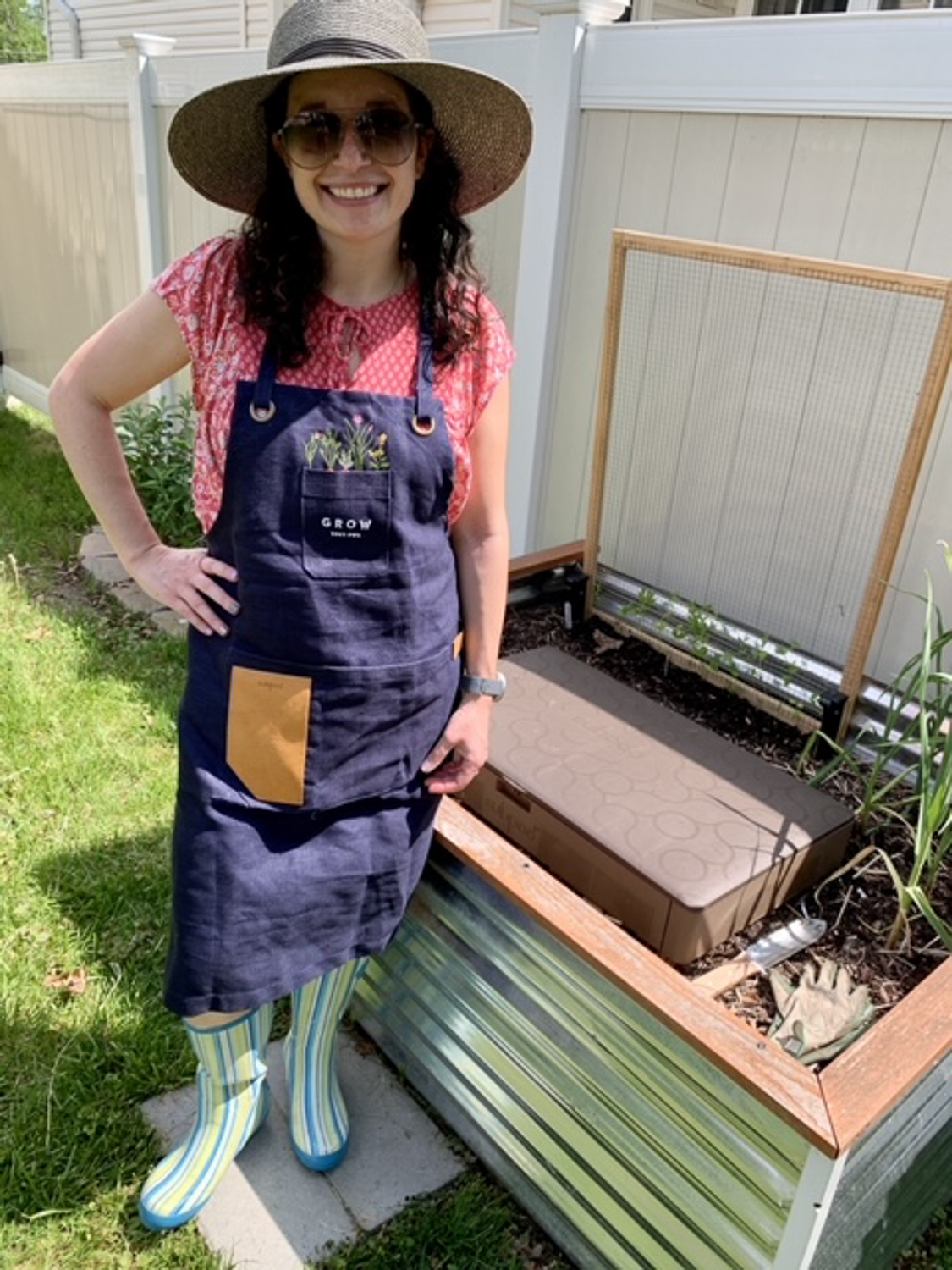
Can you tell us a bit about yourself?
My name is Giordana, and I live with my husband and 6-year-old son in Catonsville, Maryland, which is a suburb of Baltimore. I’m also mom to two cats, five fish, and thousands of worms. 🙂 I’m a communications professional and a committed sustainability/zero-waste advocate.
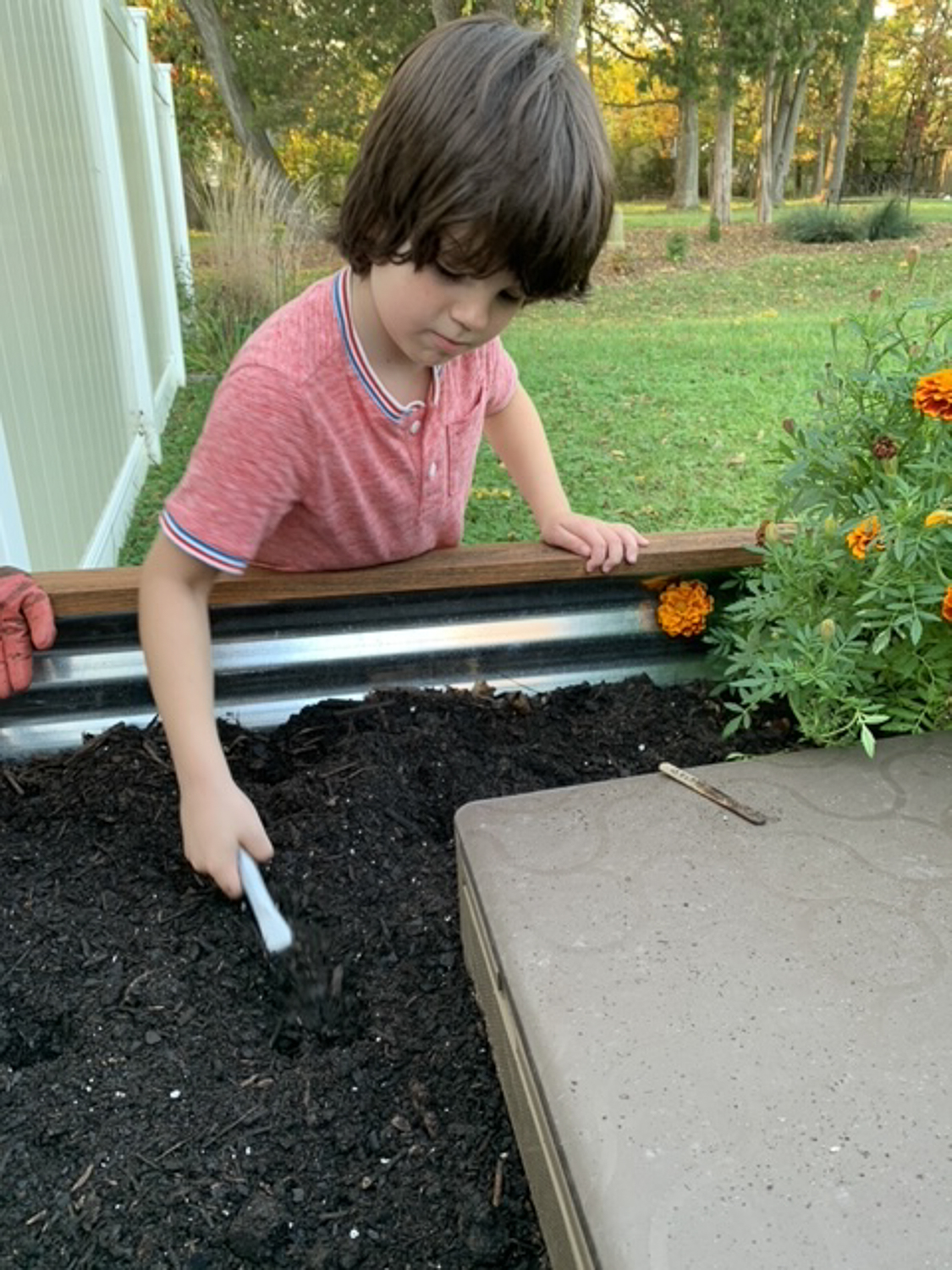
Why did you decide to start composting?
Our family’s 2020 New Year’s resolution was to reduce our impact on our environment by taking steps toward a zero-waste lifestyle. I also see climate change as a justice issue. Everyone should have the right to a healthy climate, and anything that my family and I can do towards that effort is important to us.
Part of that effort was to start backyard composting after years of wanting to do so but not being able to because of a county ordinance against above-ground systems. I had researched, written letters, etc., but had gotten nowhere, Since our property is adjacent to county property, we didn’t want to take any chances.
In social media scrolling, I came across an ad for the Subpod, and it seemed like the perfect solution for us–it made in-ground worm composting way less scary and easily achievable. We were early adopters of the system; in fact, we had to preorder it on Kickstarter and wait for production to catch up, which took about four months.
What method or methods of composting do you use or have you used?
We use the Subpod, which is an in-ground worm bin. It’s in a raised bed garden we built ourselves, and the beauty of it is that the worms can travel in and out of the Subpod into the surrounding soil, feeding the raised bed. We love the in-ground composting solution because it’s mess-free and smell-free, and the worms make it highly effective.
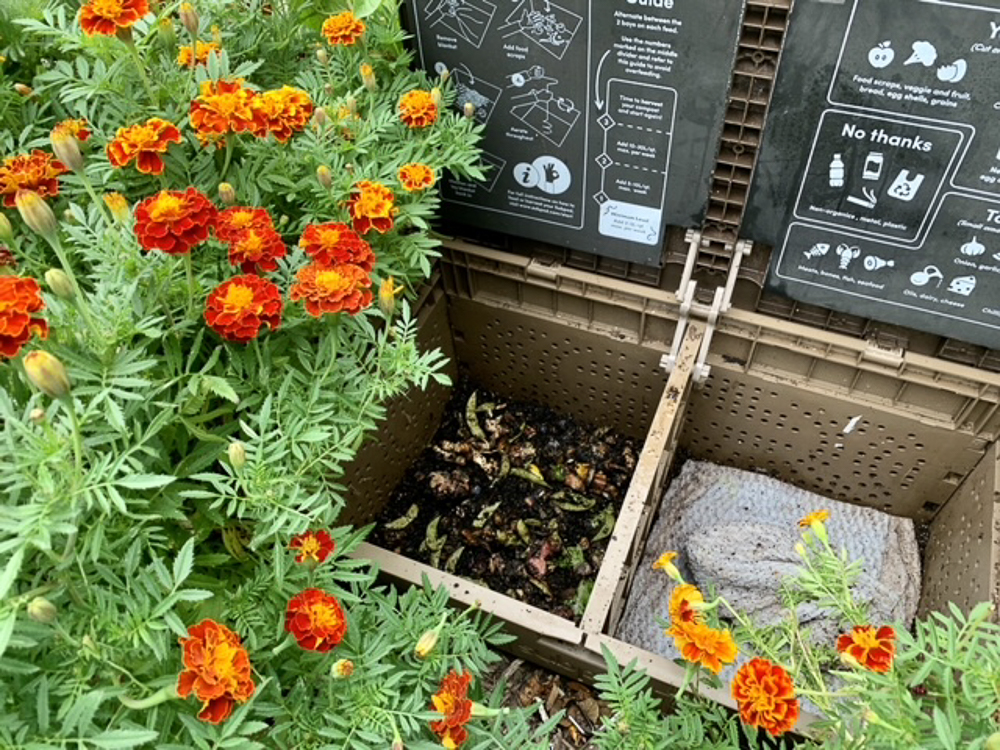
Can you tell us how long it took to get into a groove with the Subpod? Was there a learning curve? Any tips you have for making it work well?
There’s definitely a bit of a learning curve with the Subpod and, I imagine, any worm bin. It takes patience and a fair amount of needing to leave your squeamishness behind. For example, last summer, we got a black soldier fly larvae infestation, which is fairly common and a sign that your compost is too wet (balancing the wetness/dryness of the compost with dry carbon takes practice).
The first time I saw the larvae in there, I nearly lost it, but I reminded myself that they’re part of the ecosystem, too, and I gritted my teeth and started to pick them out. After a while, they didn’t bother me at all anymore, and I’ve now become very comfortable with bugs (except for hairy spiders–still can’t handle them but thankfully I’ve never seen one in the Subpod).
It’s also very important with the Subpod to start out with small feedings, just a little bit at a time until the worm population becomes established. This can take several weeks.
The Subpod hosts a Mighty Network (community/social platform) called the Grow Hub, and I did a lot of reading and asking questions there. I learned that adding a handful of coconut coir with each feeding supports worm health, as does adding a tablespoon or so of biochar. These small things helped prepare our worm population for the winter, and they survived just fine!
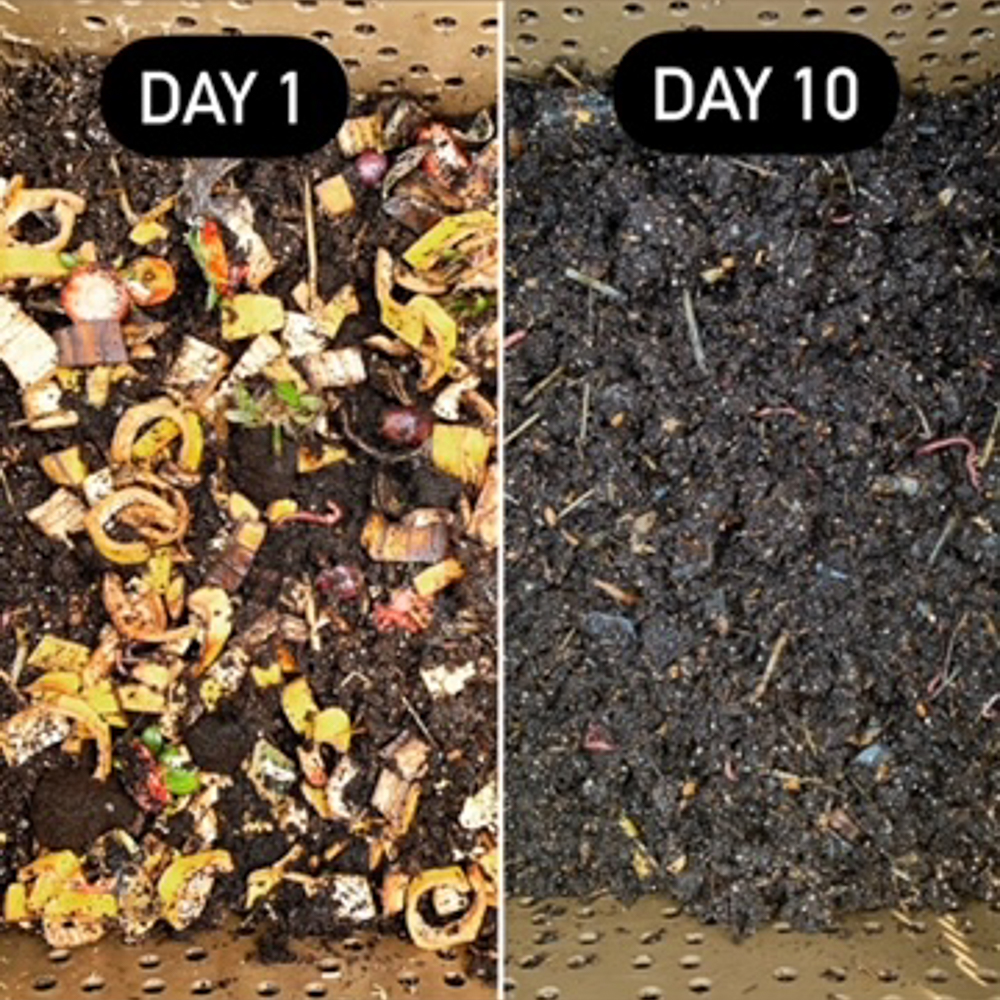
How do you store the scraps until they are taken to your compost pile?
We have a 3-liter Oxo Good Grips countertop bin (it’s nothing fancy) that we store scraps in. I try to take them out to the Subpod every few days, especially now that the worm population is substantial. It takes up minimal space, and as long as we keep the lid closed, there are no smells. We haven’t had any bug issues either.
Have you had any issues with animals or pests getting into your compost pile?
Not at all! The only issue we’ve had is with other bugs (see black soldier fly larvae above) that are part of the ecosystem. I also sometimes pick out slugs and millipedes/centipedes.
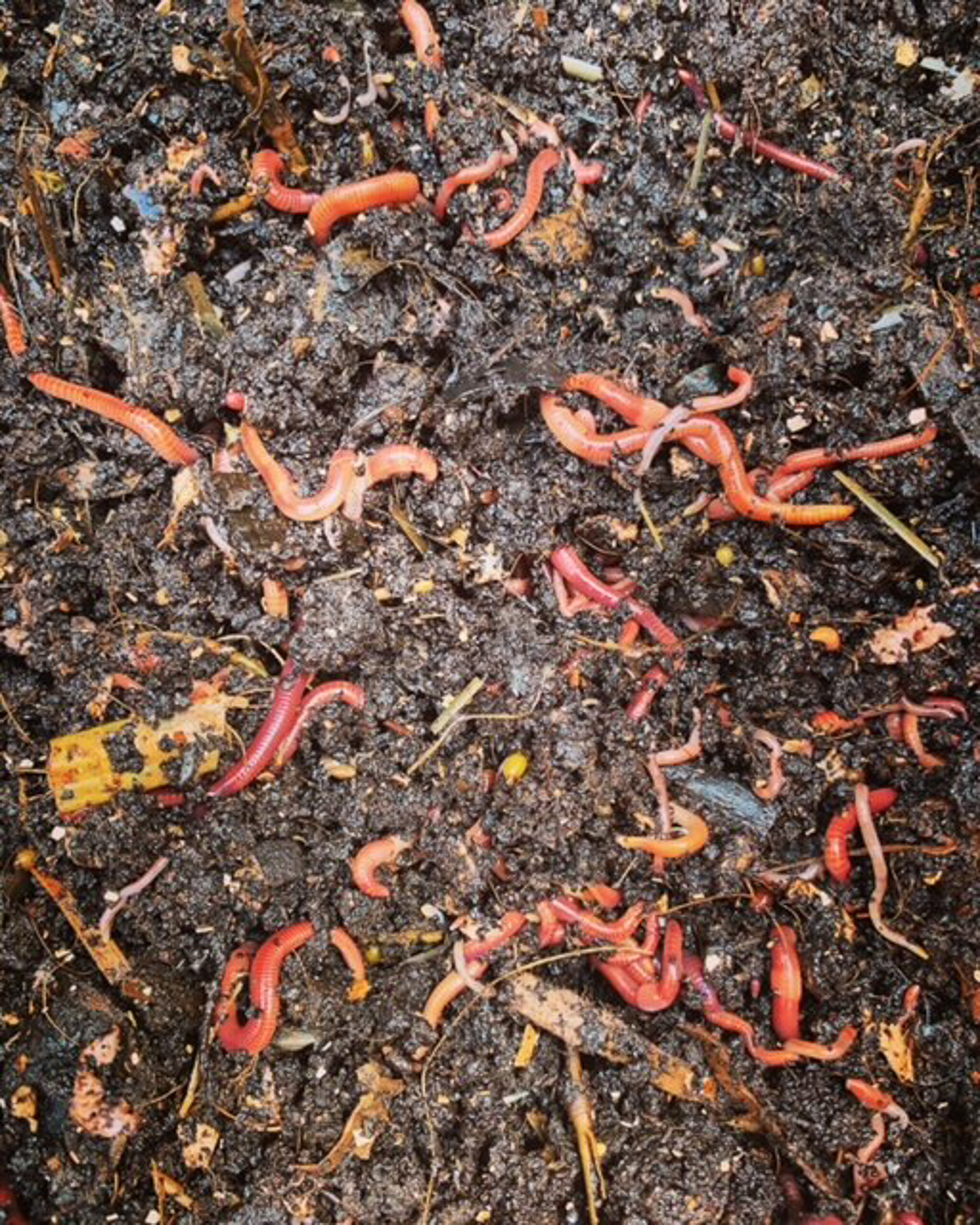
Do you have any special tools, containers, or products that help make composting easier or more accessible for you?
My go-to tool is our aerator, which we also purchased from the Subpod. It’s like a long-handled corkscrew and it allows us to easily aerate the compost. (It doesn’t hurt the worms, don’t worry!)
We aerate the compost every time we add food scraps; ensuring the compost is aerobic is important for the microbes to break down the food waste efficiently and without smells. (Early on in the process, we just used our hands or a garden trowel–it doesn’t have to be fancy!)
Do you have any other supplies that you store until you need to add them to your compost pile?
Yes! I shred a lot of paper and rip up a lot of cardboard. I just keep it in a brown paper bag, tucked away in the garage. In the fall, I also crush up leaves to throw in. That was easy because I just scooped them up from the backyard and threw them in.
How does your family feel about composting?
I thought my son would be a bit more into it, but he’s fairly squeamish and doesn’t love the worms like I do (ha!). He does enjoy aerating, though, so he’ll sometimes join in to help with that. Interestingly, though, he’s learned that we don’t throw food scraps away, and he’ll ask “Is this compostable?” or point out things on other people’s plates that should go in the compost bin.
My husband is very supportive and envisioned, engineered, and built the raised bed for the Subpod; he also does a lot of chopping of food scraps in preparation for composting. But when it comes to feeding the worms, I’m usually the one doing it. (It’s OK–I appreciate the alone time with them!)
Have you experienced any benefits from composting, especially ones that might have surprised you?
Other than having “black gold” on hand to feed the garden (we have a fairly large backyard garden in which we grow vegetables, herbs, and flowering plants), the biggest benefit is really the lifestyle change. We’re conscious of our efforts and the good we’re doing, and it makes us feel fulfilled and accomplished.
And, by the way, the Subpod raised bed is like a garden on steroids. The growth that occurs there is amazing, and it’s all due to the worms.
Also, I’d venture to say that the Subpod has helped save our sanity during an immensely challenging year. It’s given us something positive to do and think about, something to focus our efforts and energies on in our own backyard when we’ve been unable to do anything much beyond our neighborhood. It’s also given us little victories along the way–we’ve watched our worm population explode, our composted material collect in the Subpod, our garden thrive–in a year with so few of them.
Anything else you’d like to share with readers about your composting practices, especially to help beginners gain confidence that they too can compost?
We were beginners less than a year ago and had absolutely no idea what we were doing! We gave it a go, have had a lot of success with it, and have managed to make converts of more than a few people. A lot of it is trial and error, and it’s an adventure. We’re sharing our wins AND our losses so others can learn from them.
Where else can we find you and learn more about what you’re up to?
I share as much as possible about our composting adventure on Instagram @happycomposters. Honestly, I started the account on a whim–figured it would be fun to share our story and document the process. I’m a communications professional, so it comes naturally, I suppose.
But what it did was introduce me to an incredibly supportive community of like-minded people, passionate about countering climate change, especially during a year when we’ve felt incredibly isolated. We’ve had people reach out to us, thanking us for inspiring them to compost and to get their own Subpods. That was our goal: to show how easy it can be, and if even one person becomes a composting convert, we feel like we’ve done something good for the world.
Thank you so much, Giordana for sharing all about your experience with the Subpod. If you’re interested in trying the Subpod for yourself, be sure to use our referral code HONESTLY10 for 10% off your purchase! If you have any questions at all, don’t hesitate to reach out or leave a comment below.
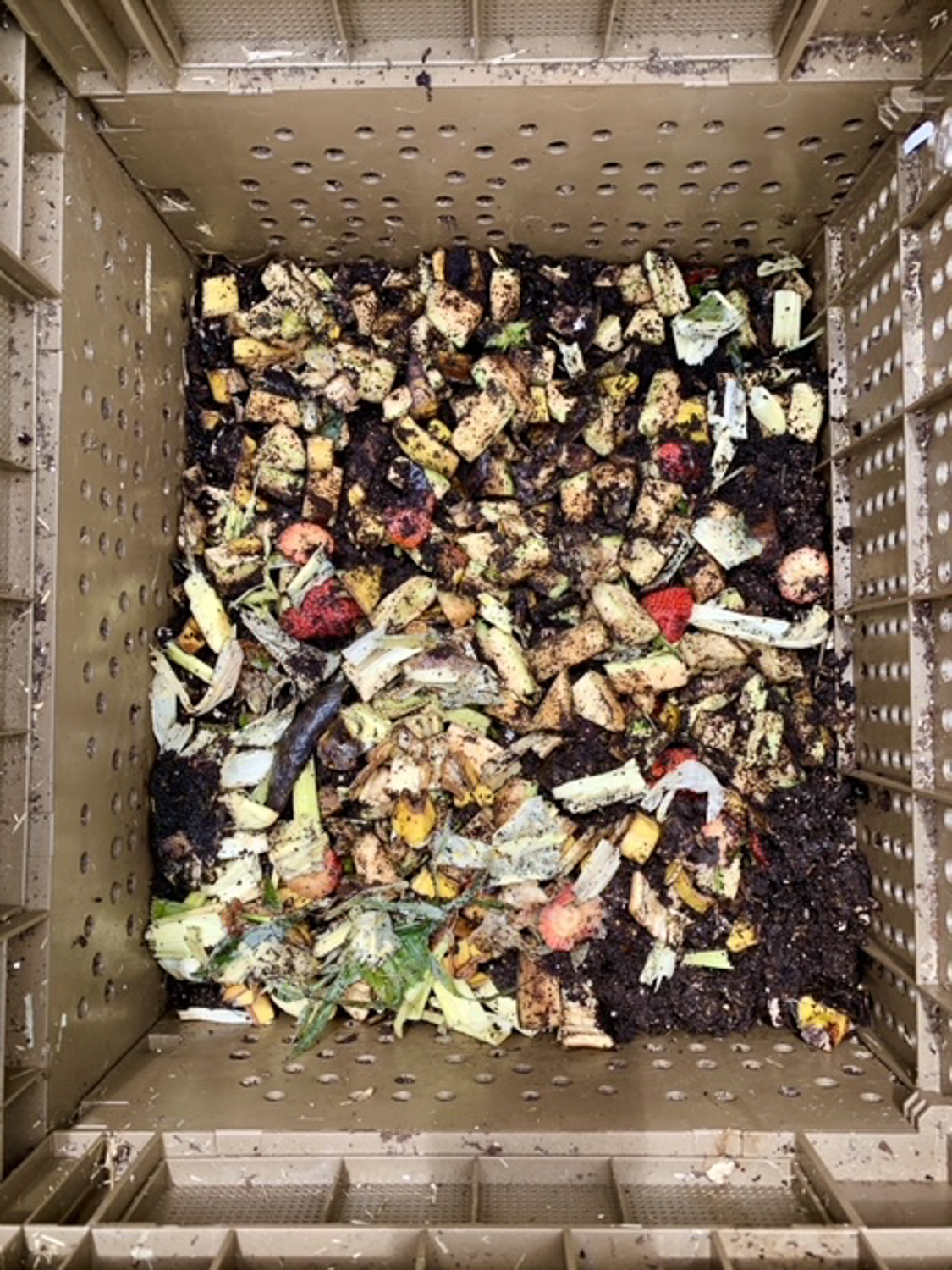
Bring Your Trash To Life Interview Series
For more interviews from everyday families who compost at home, check out our entire series of Bring Your Trash To Life interviews. We’ve interviewed tons of families who compost in a variety of ways, so hopefully, there are one or two ways that may work for your family and inspire you to try composting at home!

